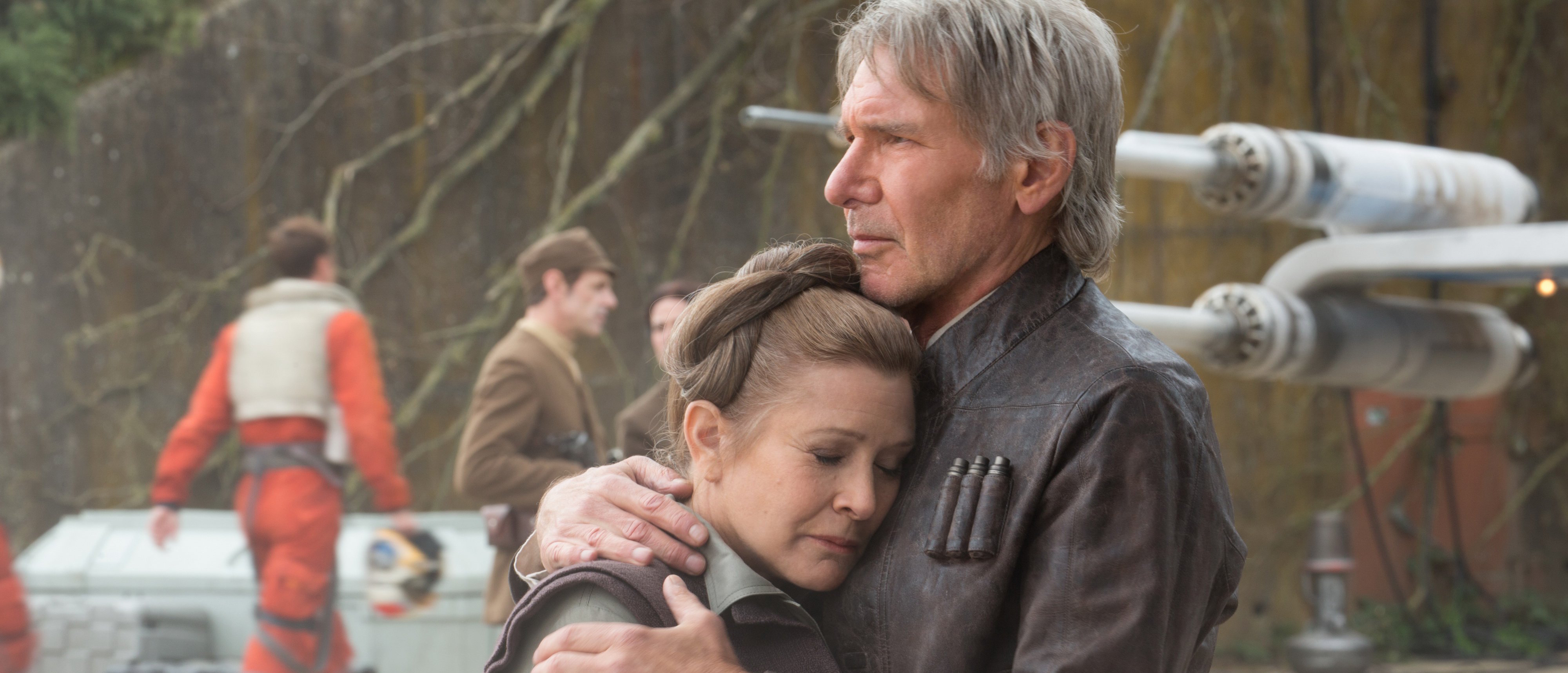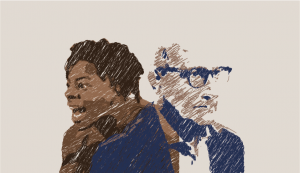For anybody who lives in a drastically unequal city, where every day the rich and the poor collide, our introduction to Rey of Jakku in the early scenes of Star Wars Episode VII: The Force Awakens (2015) can be humbling.
We first see a masked prospector rappelling down a cavernous wreck, a cool blue headlight adorning his/her ski goggles. Having gotten the treasure, the person walks out into the desert sunlight and exposes her face: a pretty girl. She’s carrying a staff, looks like an adventurer. A latter day female Indiana Jones, perhaps. (Or, rather, an ancient one, since Star Wars is set “A long time ago, in a galaxy far, far away…”)
Rey then sand boards down a giant dune. What fun. At the bottom she gathers her things and mounts a nifty speeder—what one might expect if Ducati designed hoverboards—and then zooms across the stunning desert, the massive Star Destroyer she was plundering in the backdrop.
I want her job.
Moments later, the image is shattered. We see Rey interacting with Unkar Plutt, a grotesque junk boss. When he offers Rey a “one-quarter portion” for her bounty, everything we need to know about the political machinery, her position in the economic food chain, is captured in her expression.
Rey is no Indiana Jones; she is just one of those slum rats living on rubbish mountains.
In this world’s dense, unequal cities, the privileged sometimes parachute themselves into the lives of the destitute for a fleeting glance, perhaps in a bid to empathise, but more likely to rationalise social structures.
In Singapore, I have met car-owners who’ve jumped onto public buses and trains around lunchtime. “Car’s in the workshop!” is their opening cry, as if, like the prince spotted outside the palace, some justification is needed for their descent to the commuting doldrums. What follows is more worrying.
“This is like being on holiday! Singapore’s public transport is great.” Only a few seem self-aware enough to process that a one-off ride in the middle of the day is quite different from a daily slog through rush hour. Most return to la-la-land with an even deeper conviction that those below them are irredeemable complainers.
For their condescension and ignorance the elite have, of course, Singapore’s best and brightest as role models. Just a few months before The Force Awakens was released, Tan Chuan-Jin, then minister and now speaker of Singapore’s parliament, popped in to visit the city’s cardboard collectors.
These are the workers in Singapore, one of the richest cities on earth, who most closely resemble scavengers. A 75-year-old recently said that for the cardboard he collects after working all night, he earns S$3.10, barely enough for a meal and drink. Tan, with an annual salary of well over a million dollars, earns more in one minute than the 75-year-old does in one night shift.
Tan’s breezy take-away was that the cardboard collectors’ lives are not half bad; and that some of these geriatrics collect cardboard “as a form of exercise and activity”.
This is what happens when you observe Rey of Jakku and think she’s having fun.
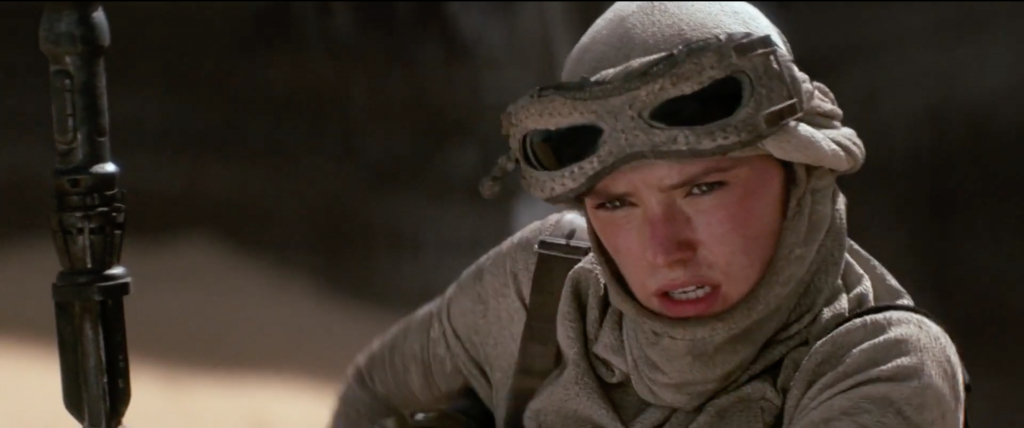
I later watched the original Star Wars (1977), by then rebranded as Episode IV: A New Hope, and Episode V: The Empire Strikes Back (1980), still regarded as the pick of the lot (and arguably one of the best movies of all time). The Empire Strikes Back was not only a visual feast, including menacing AT-ATs pounding icy landscapes, but had a dramatic narrative arc that produced a very un-Hollywood ending (one hero lost a hand and the battle; the other ended up in deep-freeze) and some of the franchise’s most memorable lines (“I am your father”; “Do, or do not. There is no try”).
Like many others, I persisted through the mediocre second prequel trilogy—Episode I: The Phantom Menace (1999); Episode II: Attack of the Clones (2002); and Episode III: Revenge of the Sith (2005). Surrounded by bookish college mates trumpeting the cerebral superiority of other space operas, and anti-materialists disgusted with Lucasfilm’s insatiable merchandising, I regularly dipped back into the original trilogy to restore my faith in the Force.
The current, final trilogy—Episode VII: The Force Awakens (2015); Episode VIII: The Last Jedi (2017); and Episode IX: The Rise of Skywalker (2019)—has delighted me, despite the even more shameless merchandising (now by Disney, which bought Lucasfilm in 2012.)
It is one thing for adults to rediscover their childhood through figurines. It is quite another for one’s entire universe to be surrounded by keychains, tote bags, t-shirts, loafers and chocolates. The problem is that every new item insidiously grabs my attention. As gaudy and pointless as I find Le Creuset’s Star Wars cookware, for instance, I’m sure I’ll inspect it if I ever get a chance.
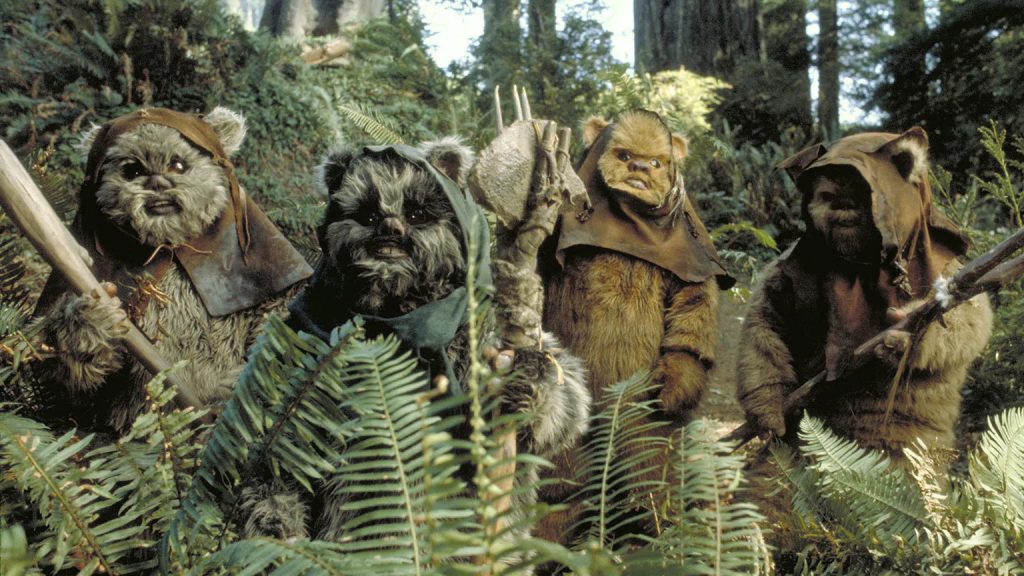
In its own bizarre way, then, Star Wars demonstrates the power of religious fervour. In the 2011 UK census, “Jedi” was the largest of the minor religions, i.e. after Christianity, Islam, Hinduism, Sikhism, Judaism and Buddhism. More people identified as “Jedi” (176,632) than as Pagans (56,620), Jains (20,288) or Baha’i (5,021). In 2016 the UK’s Charity Commission turned down an application by The Temple of Jedi Order to be classified as a religion for charitable status, saying that Jediism does not “promote moral or ethical improvement”. Yoda’s words, they have not heard.
This fervour has also inspired followers to great heights. Aside from the obvious fillip to freedom fighters and rebels everywhere, Star Wars has fuelled the dreams of numerous scientists and technologists in Singapore. This includes Benjamin Tee, president’s assistant professor of material sciences at NUS, and one of the world’s authorities on electronic skin, which is made of plastic embedded with sensors. In a separate interview Tee told me that he was particularly struck by the scene in The Empire Strikes Back in which Luke Skywalker is fitted with a new prosthetic arm. (Electronic skin, among other things, promises to augment prosthetic parts with the sense of touch.)

With this third trilogy, there are three characters evolving in parallel: Rey, the rising Jedi; Ben Solo/Kylo Ren, leader of the (evil) First Order; and FN-2187/Finn, the Stormtrooper turned rebel hero. And we only have a vague sense for how this is going to end. (Light, Dark, Light? All survive?)
Masks are used more deliberately throughout as figurative elements. Finn spends most of The Force Awakens eager to rid himself of the mask he has been forced to wear. “Who gave you permission to remove the helmet?” Captain Phasma asks Finn when she finds him alone after the first mission. Even in solitude the Stormtrooper, humanised here for the first time in the series, is not allowed to be himself/herself. The mask, the role, the identity the Empire forces on the foot soldiers—it is all consuming.
Star Wars has always been about fulfilling one’s destiny, yet with Finn we encounter somebody who is consciously changing his. In The Force Awakens Maz Kanata, bar owner, says Finn has “the eyes of a man who wants to run”. While initially true, by the end of The Last Jedi, Finn has become the most gung-ho of resistance fighters. What is his true destiny?
Kylo Ren’s flirtations with his mask are even more intriguing. When he first removes it midway through The Force Awakens, the viewer is shocked—the devilish lord is actually a pubescent-looking punk?
(Followers of actor Adam Driver, for all his awkward brilliance, must have been even more surprised. From a goofy perv on Girls to leader of the Dark Side?)
Kylo, we learn, hopes the mask can help him hide his youth and emulate his grandfather, Darth Vader, whose own dented mask serves as a shrine. When Kylo finally destroys his own mask in The Last Jedi, it is with the raw fury that one expects from an ex-Marine (Driver). Perhaps at that moment both actor and character proved themselves to some viewers.
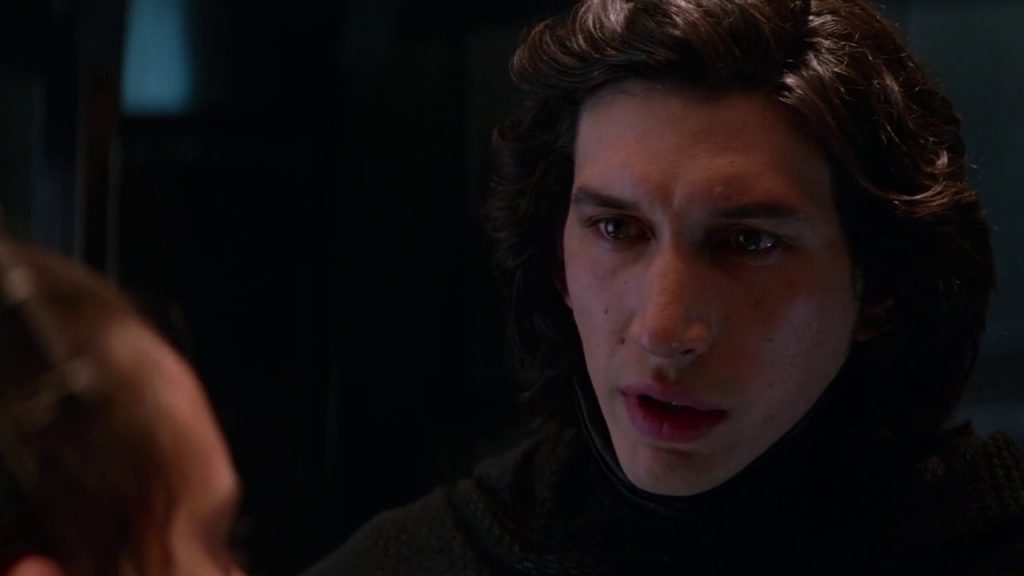
Which brings us to arguably the most endearing thing about Star Wars: the chemistry between actors. When Leia (played by Carrie Fisher) and Han Solo (Harrison Ford) meet again in The Force Awakens, it was like the next chapter of a decades-long love story, one whose intergalactic enormity makes the likes of Hanks/Ryan or Barrymore/Sandler or Gosling/Stone seem like Sunday dalliances at the park.
(All the more because we now know that Fisher, then 19, and Ford, 34, were actually getting stoned and shagging between takes in 1976, much to creator George Lucas’s irritation.)
By that first scene in The Force Awakens we know that Han and Leia are the parents of Ben Solo/Kylo Ren, and that they haven’t met for years. Their history, body language and tone permit a real economy of words.
Han: “You’ve changed your hair.”
Leia: “[You’re wearing the] Same jacket.”
Six words that could describe a million relationships, and yet is so uniquely theirs.
The new trilogy, whatever its other flaws, has thrown up sizzling new duos: Kylo and Rey; Kylo and General Hux, co-leader and occasional nemesis; Rey and Finn; Finn and Poe Dameron, resistance commander; and Poe and BB-8, cute new droid.
Each of those individual relationships is a tiny sub-plot for Episode IX: The Rise of Skywalker.
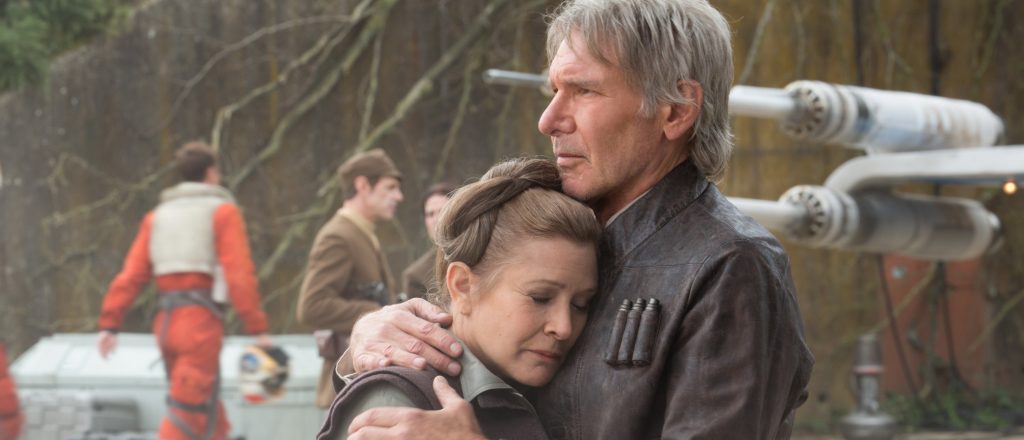
Even the famous opening crawl—“A long time ago, in a galaxy far, far away …”—deserves further contemplation. Many dismiss it as a gibberish disclaimer.
Yet if Lucas was really offering us a window onto another galaxy and its civilisations, it makes perfect sense. The farthest known galaxy in our universe is some 13.3 billion light years away. Images taken of it by the Hubble Space Telescope right now, in other words, show how it was 13.3 billion years ago. When we watch a galaxy far, far away, we necessarily see it a long time ago.
As the forty-two year old journey of Star Wars draws to a close this month, it perhaps offers each of us a similar lens, to contemplate what we were like a long time ago, and how we have changed over the years. (Or not. Same jacket?)
I watched the original trilogy on VHS as a schoolboy in Singapore; the second on 2D IMAX and DVD as a university student in the US; and the third on 3D IMAX and Blu-Ray as a midcareer worker in Singapore. My current 6 inch figures from Hasbro are far more detailed and maneuverable than my original 3.75 inchers from Kenner (which Hasbro bought in 1991).
Have the sharper definitions and fancier toys, to paraphrase Kondo, brought me more joy? I’m not sure.
Moreover, while many people in the world have escaped desperate poverty, there are still too many cardboard collectors and scavengers around. Separately we are now more aware of how our consumption of movies and figurines and everything else is taking a toll on our planet, and the many people on its environmental fringes.
While I whine about injustices in some instances, do my actions actually perpetrate them in others?
Perhaps, as we watch Rey and Kylo do one final dance between the Light and the Dark, that is the key message from Star Wars. As we search ourselves, morality is never a binary. From the viewpoint of some people at certain moments of our life, each of us might appear to be part of The Empire; and for others, just Rebel Scum.

